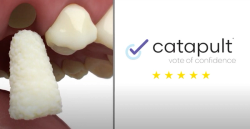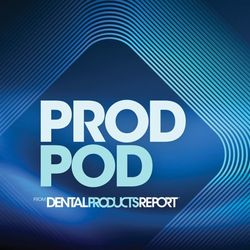- About Us
- Advertise
- Editorial
- Contact Us
- Terms and Conditions
- Privacy Policy
- Do Not Sell My Personal Information
© 2025 MJH Life Sciences™ and Dental Products Report. All rights reserved.
How to: Restore large interproximal posterior lesions
Restoring large interproximal posterior lesions with direct composite efficiently and predictably is a daily challenge for most of us. This task usually coincides with the removal and replacement of an existing, but failing, restoration. With the advent of newer dental products, materials and techniques, we now have better options to deliver higher quality interproximal dental restorations in a less stressful fashion.
Restoring large interproximal posterior lesions with direct composite efficiently and predictably is a daily challenge for most of us. This task usually coincides with the removal and replacement of an existing, but failing, restoration.
With the advent of newer dental products, materials and techniques, we now have better options to deliver higher quality interproximal dental restorations in a less stressful fashion.
Directa Dental’s FenderMate and FenderWedge are a combination of a wedge and a stainless steel matrix band thin enough to easily accommodate most narrow spaces. When inserted, FenderWedge pre-separates the teeth by a few tenths of a millimeter, which aids in the final building of the contact point. It also protects adjacent teeth during Class II preparation, during which the adjacent teeth are subject to damage.
Case presentation
This patient has to travel more than 5 hours to see me. We did her eight veneers more than 10 years ago.
Since then, she has seen a more local dentist for her cleanings and fillings. Her chief complaint was that she felt a hole in her tooth.
Clinical and radiographic examinations revealed fractures and caries under an old composite on tooth No. 12 (Fig. 1).
As this tooth had a 10-year-old veneer on the facial, we discussed two options: restoring the tooth with a crown or to try to preserve her remaining tooth structure as well as the porcelain restoration. She chose to remove the old filling, clean out the decay, evaluate the situation, and go from there.
01 After anesthetizing the patient with local infiltration, a FenderWedge was placed on the mesial and a FenderMate was carefully placed on the distal, not to disturb the intact porcelain veneer (Fig. 2).These wedges, because they are attached to an interproximal guard, served to pre-wedge the teeth for better contacts in the final restoration, and protect the adjacent interproximal teeth from abrasion, and along with the Isolite, serve to better isolate the tooth.
02 Once the FenderMate and FenderWedge were placed, the caries detector helped to identify the extent of the decay, which was then excavated. New FenderMates replaced the FenderMate and FenderWedge on the mesial and distal after the tooth was fully prepared (Fig. 3). These wedges will stay in place until the final restoration is completed.
03 The tooth was first microetched and then etched with phosphoric acid on the enamel (Fig. 4). A fifth generation bonding agent was applied, cured and lined with flowable composite (Fig. 5).
04 Next, composite resin was placed and cured incrementally with varying shades and layers to mimic natural tooth structure (Fig. 6). The entire restoration was built up with composite to ideal form and height with the FenderMates in place (Fig. 7).
05 When the FenderMates were removed, the wedges detached from the interproximal guards as designed. Hemostats were used to easily remove the guards. Ideal contours and contacts were achieved effortlessly (Fig. 8) with the help of the FenderMates. The occlusion was adjusted accordingly and the interproximal contacts were checked with floss for tight contacts (Fig. 9). A high shine was achieved with final finishing and polishing (Fig. 10). The patient was ecstatic to have preserved her original porcelain veneer with this predictable and efficient technique that ultimately saved everyone time, tooth and money.
About the author
Dr. Berland is a Fellow of the American Academy of Cosmetic Dentistry (AACD), the co-creator of the Lorin Library Smile Style Guide, and the developer of denturewearers.com. He also is the founder of Berland Dental Arts, a multidoctor specialty practice celebrating 25 years in the Dallas Arts District that pioneered the concept of spa dentistry. Dr. Berland also is the creator of “Composite Same Day Inlay/Onlays,” and “The Latest and Greatest in Cosmetic Dentistry-A Full Mouth Rehab in 2 Visits,” both awarded 8 AGD credits. His unique approach to dentistry has been featured on television and publications such as 20/20, Time, Town & Country, Reader’s Digest, GQ, US News & World Report, Woman’s World, Details, Dallas Morning News, Good Morning Texas, and D magazine. In 2008, The AACD honored Dr. Berland with the 2008 Outstanding Contributions to the Art and Science of Cosmetic Dentistry Award. He can be reached at drberland@dallasdentalspa.com.



